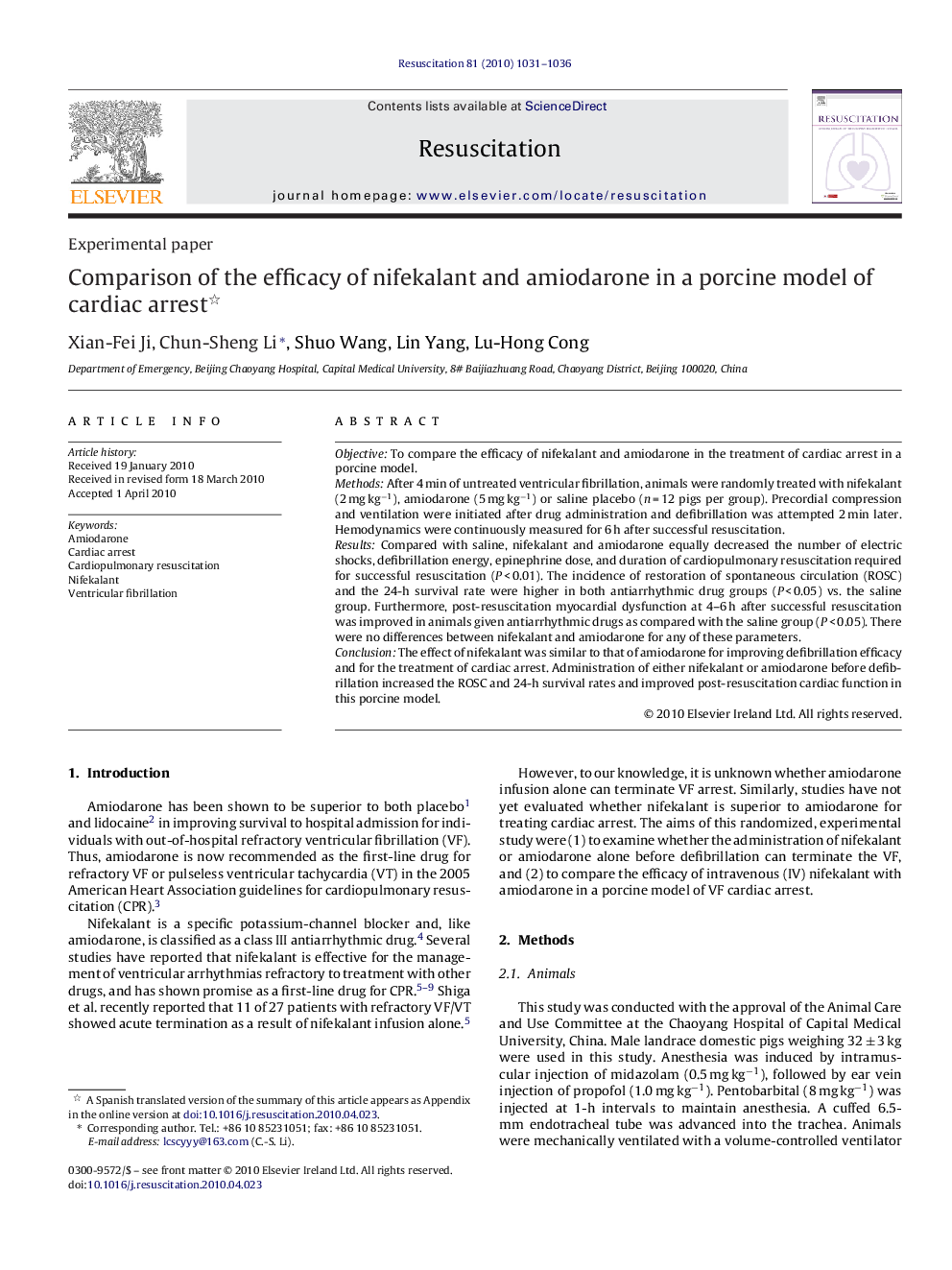| Article ID | Journal | Published Year | Pages | File Type |
|---|---|---|---|---|
| 3009643 | Resuscitation | 2010 | 6 Pages |
ObjectiveTo compare the efficacy of nifekalant and amiodarone in the treatment of cardiac arrest in a porcine model.MethodsAfter 4 min of untreated ventricular fibrillation, animals were randomly treated with nifekalant (2 mg kg−1), amiodarone (5 mg kg−1) or saline placebo (n = 12 pigs per group). Precordial compression and ventilation were initiated after drug administration and defibrillation was attempted 2 min later. Hemodynamics were continuously measured for 6 h after successful resuscitation.ResultsCompared with saline, nifekalant and amiodarone equally decreased the number of electric shocks, defibrillation energy, epinephrine dose, and duration of cardiopulmonary resuscitation required for successful resuscitation (P < 0.01). The incidence of restoration of spontaneous circulation (ROSC) and the 24-h survival rate were higher in both antiarrhythmic drug groups (P < 0.05) vs. the saline group. Furthermore, post-resuscitation myocardial dysfunction at 4–6 h after successful resuscitation was improved in animals given antiarrhythmic drugs as compared with the saline group (P < 0.05). There were no differences between nifekalant and amiodarone for any of these parameters.ConclusionThe effect of nifekalant was similar to that of amiodarone for improving defibrillation efficacy and for the treatment of cardiac arrest. Administration of either nifekalant or amiodarone before defibrillation increased the ROSC and 24-h survival rates and improved post-resuscitation cardiac function in this porcine model.
